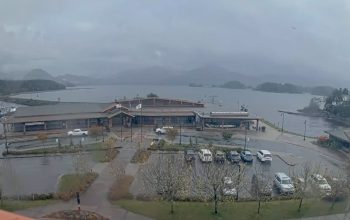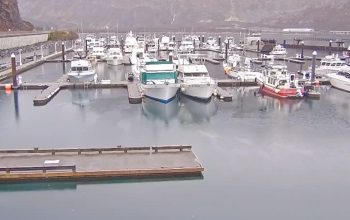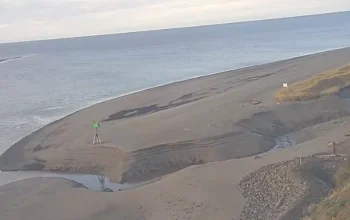Experience Sarasota’s Beaches Through Sarasota Live Cams
Sarasota, Florida, offers stunning white-sand beaches and peaceful parks. Now, Sarasota live cams let you enjoy these views from anywhere. With these Sarasota Webcams you can watch the beauty of this Gulf-side paradise unfold on your screen, giving you a front-row seat to breathtaking beaches and scenic parks.
The live cams capture Sarasota’s gorgeous beaches in real time. Siesta Key Beach, known for its powdery white quartz sand, often steals the spotlight. You can watch the gentle waves, beachgoers soaking up the sun, and families building sandcastles.
Lido Beach offers another spectacular view. Its pristine sand and calm waters make it a peaceful escape. With the live cams, you can enjoy the beauty of these beaches even if you can’t be there in person.
Things To Do In Sarasota
Sarasota, Florida, offers a rich tapestry of attractions that cater to diverse interests. From art and culture to nature and marine life, there’s something for everyone. Here’s a guide to some of the must-visit spots in this vibrant city.
The Ringling
The Ringling stands as a testament to Sarasota’s cultural heritage. This expansive complex includes the John and Mable Ringling Museum of Art, showcasing an impressive collection of European paintings and decorative arts. Visitors can also explore the Ca’ d’Zan Mansion, a Venetian Gothic-style residence that was once the home of the Ringlings. The Circus Museum offers a glimpse into the history of the American circus, reflecting John Ringling’s significant influence in the industry. The beautifully landscaped Bayfront Gardens provide a serene environment for leisurely strolls.
Marie Selby Botanical Gardens
Nestled along Sarasota Bay, the Marie Selby Botanical Gardens is a haven for plant enthusiasts and those seeking tranquility. Spanning 15 acres, the gardens are renowned for their extensive collection of epiphytes, particularly orchids and bromeliads. The Children’s Rainforest Garden offers interactive exhibits, making it a delightful experience for families. Seasonal events and rotating exhibits ensure there’s always something new to discover.
St. Armands Circle
For a blend of shopping, dining, and art, St. Armands Circle is the place to be. This upscale district boasts over 130 boutiques, restaurants, and galleries, all set within a charming circular layout. Its unique design, envisioned by John Ringling, reflects the city’s connection to the circus world. Whether you’re looking for high-end fashion, unique souvenirs, or gourmet cuisine, St. Armands Circle offers a vibrant and leisurely shopping experience.
Sarasota Opera House
A cornerstone of the city’s performing arts scene, the Sarasota Opera House is an architectural gem that hosts a variety of operatic performances throughout the year. Its intimate setting and excellent acoustics make it a favorite among opera enthusiasts. Beyond opera, the venue also accommodates concerts, ballets, and other cultural events, contributing significantly to Sarasota’s rich arts landscape.
Circus City
Sarasota’s moniker as “Circus City” stems from its deep-rooted history with the American circus. The city was once the winter headquarters for the Ringling Bros. and Barnum & Bailey Circus. Today, this legacy is preserved and celebrated through various attractions and events, offering visitors a glimpse into the flamboyant world of circus arts.
Myakka River State Park
Nature enthusiasts will find solace in Myakka River State Park, one of Florida’s oldest and largest state parks. The park encompasses diverse ecosystems, including wetlands, prairies, and woodlands. Visitors can embark on boat tours to observe alligators, enjoy hiking trails that wind through scenic landscapes, and experience the canopy walkway for a bird’s-eye view of the surroundings. It’s a perfect destination for those seeking outdoor adventure and wildlife observation.
Mote Marine Laboratory & Aquarium
Delve into the wonders of marine science at the Mote Marine Laboratory & Aquarium. This facility not only serves as a research institution but also offers interactive exhibits for the public. Visitors can learn about local marine ecosystems, observe a variety of sea creatures, and gain insights into ongoing marine conservation efforts. It’s both an educational and engaging experience for all ages.
Sarasota’s diverse attractions ensure that every visitor finds something to cherish. Whether you’re an art aficionado, nature lover, or history buff, this city promises enriching experiences that will leave lasting memories.
The Rich History of Sarasota
Sarasota, Florida, is a city with a deep and fascinating history. Long before it became a tourist destination with beautiful beaches and vibrant culture, it was home to the indigenous, European explorers, and early settlers. The history of Sarasota stretches back thousands of years, and its name even appeared on maps from the 18th century. Let’s take a journey through time and explore the rich past of this remarkable place.
The Indigenous People of Sarasota
The Calusa: The Fierce Rulers of the Land
The first known inhabitants of Sarasota were the Calusa people, who thrived in the region for thousands of years. The Calusa were a powerful Native American group known for their advanced society and impressive engineering skills. Unlike other indigenous groups, they built their villages on shell mounds and used elaborate canals to navigate the waterways.
They were skilled fishers, relying on the rich marine life of Sarasota Bay. They used massive dugout canoes to travel along the coast and even fought off Spanish explorers with their war canoes. The Calusa were also known for their complex social structure, with a ruling class that controlled the people through religious and political power.
The Timucua: A Northern Influence
Another indigenous group, the Timucua, lived in parts of northern Florida and may have influenced Sarasota’s early history. Unlike the Calusa, the Timucua were more agrarian, growing maize, beans, and squash. However, they, too, faced challenges when European explorers arrived.
Decline of Indigenous Groups
The arrival of Spanish explorers in the 1500s brought disease and conflict to the native people of Florida. The Calusa and Timucua populations declined rapidly due to smallpox, warfare, and forced labor. By the 18th century, their once-powerful societies had almost entirely disappeared.
Early Spanish Exploration
Sarasota first appeared on a Spanish map in 1763 under the name “Zarazote,” covering present-day Sarasota and Bradenton. The origin of the name is debated—some believe it comes from Hernando de Soto’s daughter, Sara, while others think it’s derived from the Calusa phrase “sara-de-cota,” meaning “an area of land easily observed.”
The Spanish arrived in Florida in 1513, when explorer Juan Ponce de León claimed the land for Spain. Later, Hernando de Soto explored Florida in 1539, searching for gold and other riches. Though he traveled through parts of the Gulf Coast, there is no definitive evidence that he passed through Sarasota.
Spanish Control and British Rule
Spain controlled Florida until 1763, when it was ceded to Britain as part of a treaty. During British rule, Florida remained sparsely populated, with only a few small settlements and trading posts. However, after the American Revolution, Spain regained control of Florida in 1783.
The Seminole People and American Expansion
In the early 1800s, as Spain’s control weakened, American settlers and Seminole Indians moved into the Sarasota area. The Seminoles were originally Creek Indians from Georgia and Alabama who migrated south to escape American expansion. However, tensions between settlers and the Seminoles led to the Seminole Wars (1817-1858), forcing many indigenous people to leave Florida.
Florida Becomes a U.S. Territory
In 1821, Spain officially ceded Florida to the United States, making it a U.S. territory. By the mid-1800s, settlers began moving into Sarasota, attracted by its natural beauty and resources.
The Florida Mortgage and Investment Company
Between 1883 and 1885, a Scottish company called the Florida Mortgage and Investment Company of Edinburgh bought 60,000 acres of land in Sarasota for development. They aimed to create a thriving community, and in December 1885, many Scottish families arrived, hoping to establish new lives.
Unfortunately, the reality was not what they expected. The land was challenging to farm, and the settlers faced harsh conditions, disease, and disappointment. Many of them left, but some remained and contributed to Sarasota’s early growth.
Sarasota Becomes a Town
Despite early struggles, Sarasota continued to develop. It was officially incorporated as a town on October 14, 1902. John Hamilton Gillespie became its first mayor and was instrumental in shaping Sarasota’s early infrastructure. He even built Florida’s first golf course, helping to establish Sarasota as a future destination for recreation and tourism.
Sarasota Becoming a City
On May 13, 1913, Sarasota was reincorporated as a city, marking a significant milestone in its growth. The first mayor of the city government was A. B. Edwards, who played a key role in Sarasota’s development.
Sarasota’s history is a tapestry woven with the stories of the natives, Spanish explorers, Scottish settlers, and American pioneers. From the mighty Calusa to the struggles of early European settlers, Sarasota has undergone remarkable transformations. Today, it is known for its cultural vibrancy, beautiful beaches, and thriving arts scene. However, beneath its modern charm lies a history filled with resilience, ambition, and deep-rooted heritage.
Sarasota’s past is a reminder of the many peoples who shaped its identity—each leaving a lasting mark on the land we know today.
Write a 600 word article about the geography of Sarasota, FL. Write something like this BUT DO NOT PLAGIARIZE! USE Active Voice. Use Transition Words and Transition Phrases when possible. Utilize Simple Language. Try to keep sentences short as possible.
The Geography of Sarasota, FL
Sarasota, Florida, is a coastal city known for its beautiful beaches, warm climate, and diverse natural landscapes. Located on the Gulf of Mexico, Sarasota features a mix of land and water, creating a unique environment that supports wildlife, tourism, and outdoor activities. From its climate to its waterways, Sarasota’s geography plays a crucial role in shaping its identity.
Location and Size
Sarasota sits on Florida’s west coast, about 60 miles south of Tampa. It is part of Sarasota County and lies along the Gulf of Mexico, giving it access to stunning beaches and waterways.
According to the U.S. Census Bureau, Sarasota covers a total area of 24.08 square miles (62.4 km²). Of this, 14.70 square miles (38.07 km²) is land, while 9.39 square miles (24.3 km²) is water. The city’s coastline, bay, and barrier islands create a dynamic landscape that attracts both residents and visitors.
Climate and Weather
Humid Subtropical Climate
Sarasota has a humid subtropical climate, meaning it experiences hot summers and mild winters. The city enjoys plenty of sunshine throughout the year, making it a popular destination for outdoor activities.
Hot and Humid Summers
Summers in Sarasota are hot and humid, with temperatures often exceeding 90°F (32°C). When combined with high humidity, the heat index frequently rises above 100°F (38°C). This makes the summer months feel even hotter, and afternoon thunderstorms are common.
Mild and Comfortable Winters
Winters in Sarasota are mild and dry, with temperatures rarely dropping below 50°F (10°C). The cooler months provide a pleasant escape from the intense summer heat, attracting snowbirds from colder states.
Rainy and Dry Seasons
Sarasota has two main weather seasons:
- Rainy Season (March to November) – Frequent rain showers and thunderstorms help keep the landscape lush.
- Dry Season (December to February) – Less rainfall, lower humidity, and cooler temperatures create ideal conditions for outdoor activities.
Coastline and Waterways
The Gulf of Mexico
Sarasota’s western border is the Gulf of Mexico, which provides stunning beaches, calm waters, and rich marine life. The warm waters of the Gulf help regulate Sarasota’s climate, keeping winters mild and summers breezy.
Sarasota Bay and the Intracoastal Waterway
Sarasota Bay is a shallow estuary that separates the mainland from the barrier islands. It is part of the Gulf Intracoastal Waterway, a system of natural and artificial channels that connect Sarasota to other coastal areas.
The Gulf Intracoastal Waterway allows boats to travel safely along the coast without entering the open ocean. This system includes:
- Natural deep-water sections
- Human-made canals
- Navigational cuts
These waterways support boating, fishing, and wildlife habitats, making them essential to Sarasota’s geography.
Barrier Islands and Beaches
Sarasota is home to several barrier islands, also known as keys. These islands protect the mainland from strong ocean currents and storms. They also offer some of the best beaches in the country.
Siesta Key
Siesta Key is famous for its white quartz sand, which stays cool even on the hottest days. It is one of the most popular beaches in Sarasota and often ranked among the best beaches in the world.
Lido Key
Lido Key offers a mix of beachfront beauty and city amenities. It is close to St. Armands Circle, a shopping and dining area that attracts visitors year-round.
Longboat Key
Longboat Key is a more secluded and upscale barrier island. It features luxury resorts, private beaches, and world-class golf courses.
Casey Key and Other Islands
Other keys, such as Casey Key and Manasota Key, provide quiet retreats and natural beauty, making them ideal for those seeking a peaceful getaway.
Natural Environment and Wildlife
Sarasota’s diverse geography supports a wide range of plants and animals. The combination of coastal waters, wetlands, and forests creates an ideal habitat for many species.
Marine Life
Sarasota Bay and the Gulf of Mexico are home to dolphins, manatees, sea turtles, and various fish species. Conservation efforts help protect these creatures and maintain the area’s natural balance.
Birds and Wetlands
Sarasota’s wetlands and nature reserves attract herons, egrets, pelicans, and ospreys. The Myakka River State Park and other wildlife areas provide safe environments for these birds and other native species.
Sarasota’s geography makes it a special place. With its coastal location, warm climate, stunning beaches, and diverse waterways, it offers both beauty and functionality. The Gulf of Mexico, Sarasota Bay, and barrier islands shape the city’s identity, providing recreation, wildlife habitats, and scenic views.
Whether you love boating, fishing, wildlife watching, or just relaxing on the beach, Sarasota’s geography has something for everyone. It’s no surprise that people from all over the world are drawn to this Florida gem.


